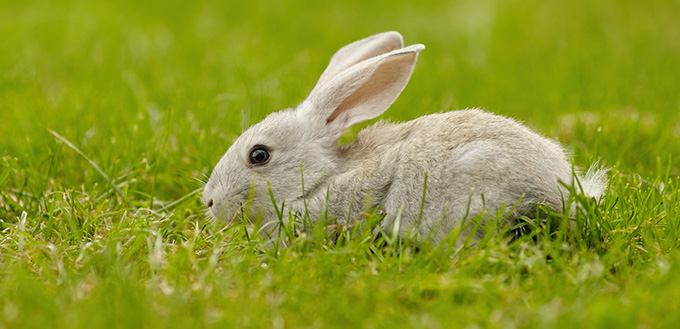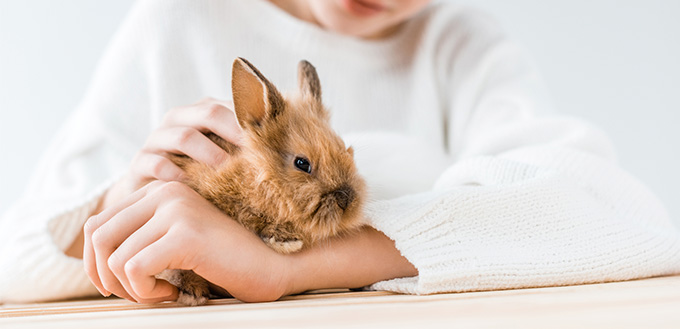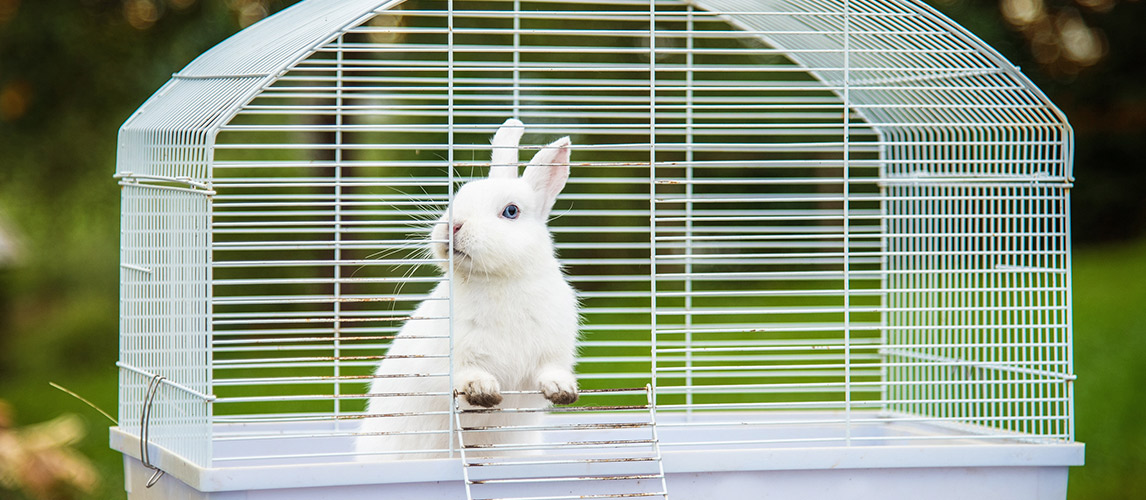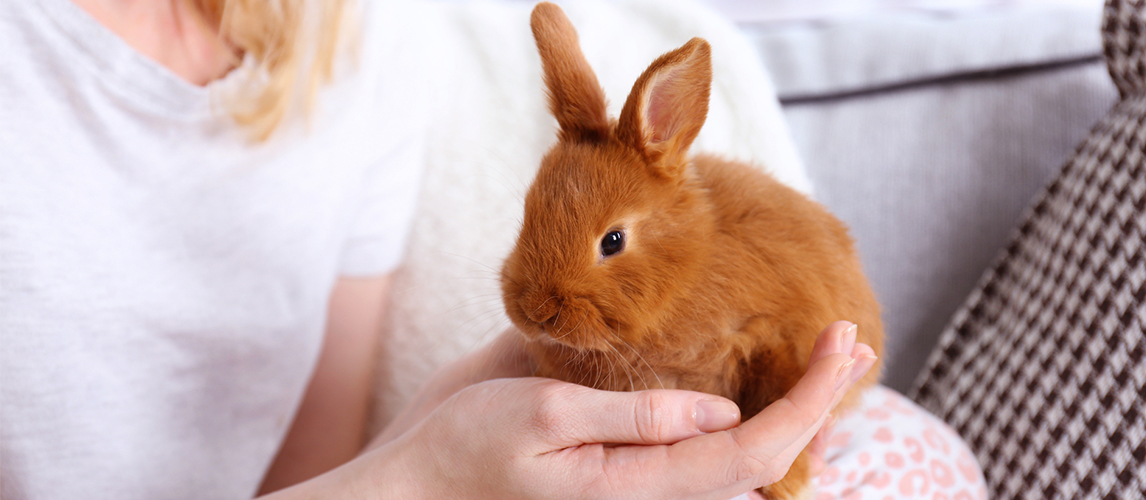With rabbits being a huge symbol of Spring, as well as making themselves known in the natural world at around the start of February, it’s easy to understand why you might be wondering if rabbits hibernate. When we consider their sudden ability to be noticed after the Winter months, many would be forgiven for noting that their rapid appearance and start of the new season seems like more than a coincidence. So, do rabbits hibernate? We discuss this, and more, in greater detail, below.

What is Hibernation?
As you’re likely well aware, the level of vegetation available in the winter months is much more sparse than, say, spring- in which you would find yourself facing new life everywhere you look. This is because a lot of the flora and fauna in the world can’t handle the lower temperatures, so they essentially shut themselves down to spend the lowest amount of energy possible, without dying.
When this happens, the level of insects that also feed on these sources of nutrition also dies down. This leaves many animals in a bit of a conundrum- after all, their main sources of food have now dwindled down to nearly nothing and there is now a distinct lack of sustenance for their needs.
Thus, when these animals find themselves with no nutrition or energy sources from the world around them, they do the very same thing that the trees and plants are doing- they go into hibernation.
Going into hibernation allows the animals to fall into a deep sleep where very little energy is used, allowing them to pass the winter months without eating much. Their body temperature falls, and their breathing slows down considerably, so they almost become completely still.
Of course, we know that – even during sleep, when we’re doing nothing at all – our bodies burn energy just to keep us alive. We use energy to keep our heart beating and blood pumping, so many animals still need a good source of fat to burn during this period. This is why you’ll find animals gaining a little extra weight in the Fall months, which allows them to use two types of fat as an energy source.
The first type of fat is called white fat, which provides the animals with enough energy to keep their essential organs going, as the weeks pass by in hibernation. The second is called brown fat, which sits near the lungs, heart and brain. This fat contains more mitochondria- cells which are full of energy- and this fat kicks in when the body needs to shiver or use up quick bursts of energy.
In particular, brown fat is mostly used when it’s time for the animals to wake up, so the essential organs can warm up quickly and allow these creatures to get back to work and look for their stored food as soon as they are able.
Some animals, such as frogs and insects, aren’t able to store as much fat. So, in order to keep warm during the colder months, they will burrow into holes in the ground or head the bottom of ponds and lakes in order to maintain their heat.
Do Rabbits Hibernate?
Considering the lack of bunnies seen during the winter months, you would be forgiven for thinking that rabbits are one of the hibernating animals we discussed, above. However, it has been found that there are no known rabbit species that hibernate. In fact, they remain very active and will happily eat their way through the winter months in the same way we humans do.
That’s not to say that rabbits don’t have their fair level of hardship to handle during these colder periods. As you can imagine, since the level of vegetation dies down in the winter months considerably, the main source of food for these bunnies has almost completely been wiped out. Instead, wild rabbits start getting a little more desperate and lower their standards considerably when it comes to what they will and won’t eat- which can sometimes lead to the little critters getting into your rubbish.
They’re also more likely to be picked off by equally desperate predators, who will take advantage of the distinct lack of hiding spots created by the hibernating trees. Not to mention that the cold itself can cause problems for both wild and domestic rabbits, since rabbit fur isn’t always thick enough to shield them from constant exposure to cold.

Why Are There So Many Rabbits in Spring?
Given our earlier chat about the abundance of bunnies (and therefore rabbit poop) in Spring, it’s understandable that you might think that this is because rabbits sleep through the Winter. In fact, this is purely because of the rabbits mating season, which falls between February and March, right through ‘til September.
A rabbits gestation last around 30 days too, so this short period can bring along 5 or 6 litters in a year, in which 4 or 5 baby bunnies (also known as kits or kittens). That means that, come Spring, your local meadow is likely to become bunny central.
How to Care for a Rabbit in Winter
If you have a pet rabbit and want to ensure that they are happy and healthy through the winter months, it’s worth checking out our hints and tips below, to see how you can make your rabbit as comfortable as possible in the colder months.
- If you’re worried about the temperature outside, bring your bunny indoors. A garage or shed works just as well, if you aren’t keen on having a rabbit hutch in your home.
- Rabbits eat more in the winter, which helps them to build up a safer, warmer level of fat to get them through the cold. However, if they are indoors, be careful not to overfeed them as this could lead to obesity (luckily, rabbits burn this off very quickly in the summer).
- If you’re satisfied that your pet will be OK outside, be sure to provide them with plenty of hay for rabbits. Your rabbits will use this as both a source of nutrition and a means to keep warm, so make sure this remains topped-up. You should also ensure that there is ample, ice-free water kept close to hand so they can remain well hydrated.
- If it seriously cold and your rabbits are outdoors, or in a shed or garage, you can help keep them warm by battening down the hatches, so to speak. Use carpet samples to line the bottom of the cage, before using hay and sawdust. Check for gaps in the hutch itself, so no drafts come through. You can also line the hutch with more cardboard along the walls, to provide added insulation.
- Raise the hutch off the floor. This stops any damp from seeping through and causing rot, as well as colder temperatures in the hutch.
- Remember to clean out their cages regularly. Urine can freeze in cold temperatures and this will make their home extremely uncomfortable to live in.
- Buy another rabbit! Bunnies are sociable creatures and like to live with their bunny pals, anyway. But having another rabbit also gives them someone to snuggle into during the colder periods.
- Don’t leave them to sit around in their rabbit cage. While it’s not advisable to let them run around outside in the cold air, your rabbit will still need to stretch their legs. Let them run around in your house (somewhere that is resistant to bunny poops, like a utility or kitchen is perfect), so they can burn off some of their energy.
- If you keep your rabbit outdoors during winter, be aware that predators may be bolder than usual. Make sure your hutch is kept safe enough that no sneaky, hungry creatures can work their way in and give themselves a winter snack.
How Cold is Too Cold for Rabbits?
Rabbits without food or shelter, who aren’t protected from the cold winds that winter brings, will not be able to tolerate any temperature below 35 degrees. Having shelter from wet and cold weather will allow this minimum temperature to be considerably lower, as long as they have plenty of bedding and access to ice-free water.

How do Wild Rabbits Survive in Winter?
While the majority of the vegetation has died off during the winter, you’ll notice that wild rabbits are surprisingly hardy little creatures. This is when they start to turn their attention to all the leftovers that would usually be ignored during the more plentiful summer months. Pinecones, twigs and branches are tough but easy pickings, which means they’re usually the first to go to our vegetarian friends.
In order to stay warm, they’ll usually find a place to stay that is close to shelter and a good source of food. That usually means that you’re more likely to find them near your house. These guys do most of their foraging at night, so if you do spot one near your house, it’s best to just leave them be and let them continue on their food-sourcing quests.







